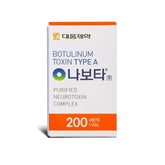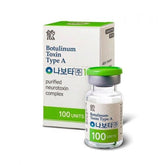Navigating Body Contouring: Lipolysis vs. Surgical Fat Removal

Navigating Body Contouring: Lipolysis vs. Surgical Fat Removal. Understanding the Basics
Before comparing the two, it's essential to understand what each procedure entails:
Lipolysis is a non-surgical procedure that uses thermal, chemical, or mechanical means to break down fat cells, which are then naturally eliminated by the body's lymphatic system. Common types of lipolysis include laser lipolysis, cryolipolysis, and injection lipolysis.
Surgical Fat Removal, most notably liposuction, involves the physical extraction of fat cells through small incisions. It's one of the most well-known cosmetic surgeries for removing stubborn fat deposits.
Lipolysis: The Non-Invasive Approach
Pros:
- Minimal Downtime: Lipolysis typically requires no significant recovery time, allowing patients to return to daily activities promptly.
- Less Invasive: Without the need for incisions, lipolysis carries a lower risk of infection and scarring.
- Gradual Results: Fat reduction occurs over weeks to months, providing a more subtle and natural transition.
- Local Anesthesia: Many lipolysis procedures only require local anesthesia, reducing the risks associated with general anesthesia.
Cons:
- Multiple Sessions Required: Several treatments may be necessary to achieve desired results.
- Limited Fat Reduction: Lipolysis may not be as effective for larger volumes of fat.
- Temporary Swelling and Bruising: Though non-invasive, the treated area may experience some swelling and bruising.
- Dependent on Technology: The effectiveness can vary based on the device and technique used.
Surgical Fat Removal: The Traditional Method
Pros:
- Immediate Results: The effects of liposuction are visible almost immediately after recovery.
- More Extensive Fat Removal: Liposuction can remove significant amounts of fat in a single session.
- Precise Contouring: Surgeons can sculpt targeted areas with precision.
- Long-Lasting: The removed fat cells are gone permanently, though new weight gain can affect results.
Cons:
-
Recovery Time: Recovery from liposuction can take several weeks, with the need for rest and limited activity.
-
Surgical Risks: As with any surgery, there is a risk of complications, such as infection, bleeding, or adverse reactions to anesthesia.
-
Potential for Scarring: Small incisions may leave scars, although they are usually minimal and strategically placed.
-
Cost: Liposuction can be more expensive due to surgical and anesthesia fees.
Navigating Body Contouring: Lipolysis vs. Surgical Fat Removal. Comparing the Effectiveness
Scope of Treatment:
Lipolysis is best suited for small, localized fat deposits, while liposuction can address larger areas and more significant fat removal.
Treatment Areas:
Both methods can treat common areas like the abdomen, thighs, and arms. However, liposuction can also effectively treat areas with denser fat layers.
Outcome Predictability:
Surgical fat removal offers more predictable results in a single session, whereas lipolysis results may vary and develop over time.
Patient Considerations
Health and Medical History:
Patients with specific health concerns may be better suited for non-surgical options to avoid the risks of surgery.
Lifestyle Factors:
Those who cannot take time off for surgery recovery may prefer the convenience of lipolysis treatments.
Aesthetic Goals:
Understanding a patient's aesthetic goals is crucial; some may prefer the gradual change of lipolysis, while others desire the immediate transformation that surgery offers.
Navigating Body Contouring: Lipolysis vs. Surgical Fat Removal. The Role of a Skilled Practitioner
Regardless of the chosen method, the expertise of the practitioner is paramount. A board-certified plastic surgeon or dermatologist should conduct a thorough evaluation to recommend the best approach based on the patient's unique body type and goals.
The Impact of Technology and Techniques
Advancements in technology continuously improve the outcomes of both lipolysis and surgical fat removal. New devices and refined techniques enhance safety, effectiveness, and patient comfort.
In the debate of lipolysis vs. surgical fat removal, there is no clear winner. Each method has its pros and cons, and the right choice depends on individual factors such as the amount of fat to be removed, the patient's medical history, lifestyle, and personal preferences. By thoroughly researching and consulting with experienced professionals, patients can make an informed decision that aligns with their body contouring goals. The journey to achieving the desired body shape is personal and varied. As advancements in fat reduction technology continue to emerge, the options for personalization and efficacy will only expand, offering tailored solutions in the dynamic landscape of cosmetic treatments.





